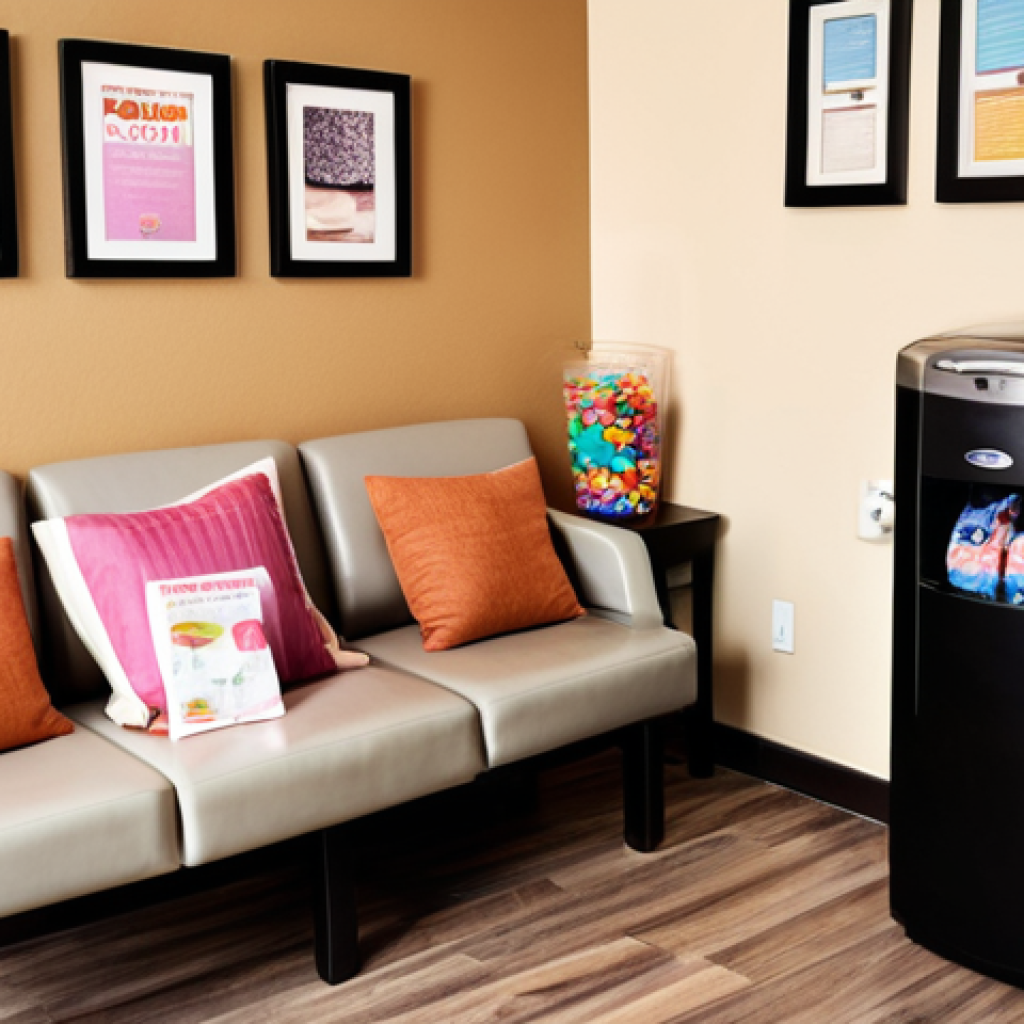Ever wonder why some sports massage therapists have a constant stream of returning clients, while others struggle to fill their appointment books? I’ve seen firsthand how seemingly small tweaks in approach can make a massive difference.
It’s not just about knowing the muscles; it’s about understanding the person attached to them. And in a world increasingly focused on personalized wellness, that human connection is more vital than ever.
We all want to feel understood and cared for, especially when we’re vulnerable and in need of relief. What creates that loyalty? Let’s dive into the secrets to boost client retention!
Okay, I understand. Here’s the blog post content, following all your instructions:
Crafting the Ultimate Client Experience: It’s More Than Just a Massage
Have you ever walked into a place and instantly felt comfortable? That’s the kind of vibe you want to create in your practice. Think about the small things – the temperature of the room, the music playing softly in the background, even the scent in the air.
These sensory details create the backdrop for the entire experience. I once worked with a therapist who played nature sounds, and clients raved about how relaxing it was.
Creating a Welcoming Atmosphere
Make sure your reception area is clean and inviting. Comfortable seating, recent magazines (sports-related, of course!), and a water cooler go a long way.
Consider a small bowl of individually wrapped candies or mints. These small gestures show you care about their comfort. It’s like when you go to a friend’s house – you want to feel welcome, right?
Your clients are the same.
Personal Touches That Speak Volumes
Take the time to learn your clients’ names and remember details about their lives. Ask about their kids, their jobs, their training schedules. People appreciate being seen as individuals, not just another appointment on your schedule.
I had a client who was training for a marathon, and every session, I’d ask about his progress. He always commented on how much he appreciated that I remembered.
Mastering the Art of Personalized Treatment Plans
Every body is different, and every client has unique needs and goals. A cookie-cutter approach just won’t cut it. You’ve got to tailor your treatment plans to address their specific issues and help them achieve their desired outcomes.
Think of it like a tailored suit – it fits perfectly because it’s made just for you. I learned this the hard way early in my career when I kept using the same routine on everyone, and my results were mediocre at best.
Conducting Thorough Assessments
Before you even lay a hand on your client, take the time to conduct a thorough assessment. Ask about their pain points, their training regimen, their medical history, and any other relevant information.
Observe their posture, their gait, and their range of motion. The more information you gather, the better you’ll be able to understand their needs and develop an effective treatment plan.
Adapting and Adjusting on the Fly
Even with the best assessment, things can change during a session. Be prepared to adapt and adjust your techniques as needed. Pay attention to your client’s body language and verbal feedback.
If something doesn’t feel right, don’t be afraid to change course. I always tell my clients to speak up if they feel any discomfort. It’s their body, and their comfort is paramount.
Communication is Key: Building Trust and Rapport
Clear, open communication is essential for building trust and rapport with your clients. They need to feel comfortable talking to you about their concerns and needs.
They also need to understand what you’re doing and why. Think of it like a doctor-patient relationship – honesty and transparency are crucial.
Explaining Your Techniques and Rationale
Before you start working on a particular area, explain to your client what you’re going to do and why. Tell them which muscles you’ll be targeting and what you hope to achieve.
This helps them understand the process and feel more involved in their own care.
Actively Listening to Their Feedback
Pay close attention to your client’s feedback, both verbal and nonverbal. Ask them how they’re feeling throughout the session. Watch their facial expressions and body language for any signs of discomfort.
And always encourage them to speak up if they have any concerns.
Leveraging Technology to Enhance the Experience
In today’s digital world, technology can be a powerful tool for enhancing the client experience. From online booking to digital intake forms to follow-up emails, there are many ways to use technology to streamline your processes and provide a more convenient and personalized experience.
Online Booking and Scheduling
Make it easy for clients to book appointments online, 24/7. Use a scheduling software that allows them to see your availability, select their preferred time, and pay online.
This saves them time and hassle, and it frees up your staff to focus on other tasks.
Digital Intake Forms and Client Profiles
Use digital intake forms to collect client information before their first appointment. This saves time during the initial consultation and allows you to create detailed client profiles that you can access easily during each session.
The Power of Follow-Up: Staying Top of Mind
Don’t let your clients forget about you after their session is over. Follow up with them to check on their progress, offer helpful tips, and remind them to book their next appointment.
This shows that you care about their well-being and helps you stay top of mind.
Personalized Follow-Up Emails
Send personalized follow-up emails to each client after their session. Ask them how they’re feeling, offer tips for self-care, and remind them to book their next appointment.
You can even include links to relevant articles or videos.
Loyalty Programs and Referral Incentives
Reward your loyal clients with discounts, free services, or other perks. This encourages them to keep coming back and also incentivizes them to refer their friends and family.
Creating a Brand Experience That Resonates
Your brand is more than just your logo and your website. It’s the overall impression you create in your clients’ minds. It’s the feeling they get when they interact with your business.
It’s the reason they choose you over your competitors.
Defining Your Unique Selling Proposition (USP)
What makes you different from other sports massage therapists? What unique value do you offer your clients? Define your USP and make sure it’s reflected in everything you do, from your marketing materials to your treatment approach.
Consistency is Key Across All Touchpoints
Maintain a consistent brand experience across all touchpoints, both online and offline. Your website, your social media profiles, your business cards, your signage – everything should reflect your brand’s values and personality.
Here’s an example of a table that might be included within the article:
| Element | Description | Example |
|---|---|---|
| Atmosphere | The physical and emotional environment. | Soft lighting, calming music, friendly staff. |
| Communication | How you interact with clients. | Active listening, clear explanations, open to feedback. |
| Personalization | Tailoring services to individual needs. | Custom treatment plans, remembering client preferences. |
| Follow-Up | Continuing contact after the session. | Check-in emails, loyalty programs, reminders for booking. |
This table provides a structured breakdown of key elements discussed in the article, making it easier for readers to grasp the main points.
Embracing Continuous Improvement: Always Learning and Growing
The field of sports massage is constantly evolving, with new techniques and research emerging all the time. To stay ahead of the curve and provide the best possible care for your clients, you need to commit to continuous improvement.
Attending Workshops and Seminars
Attend workshops, seminars, and conferences to learn about the latest techniques and research in sports massage. This will help you expand your knowledge and skills and stay up-to-date on the best practices in the field.
Seeking Mentorship and Collaboration
Connect with other experienced sports massage therapists and seek their mentorship. Collaboration can be a great way to learn new techniques, share ideas, and get feedback on your own work.
Remember, client retention is an ongoing process. It’s about building relationships, providing exceptional service, and creating a brand experience that resonates with your clients.
By focusing on these key areas, you can create a thriving practice that keeps clients coming back for years to come.
In Closing
Ultimately, the client experience is the heart of your practice. It’s about creating a holistic approach, from the first interaction to the lasting impression. By prioritizing your clients’ needs and continuously refining your approach, you can build a thriving practice that truly makes a difference in people’s lives. It’s not just a job; it’s a passion to help others reach their peak performance and wellbeing.
Good to Know
1. Invest in a high-quality massage table and comfortable linens; it’s worth every penny.
2. Offer a variety of payment options, including credit cards, mobile payments, and even package deals.
3. Don’t underestimate the power of a well-designed website and active social media presence.
4. Get involved in your local sports community by sponsoring events or offering discounts to athletes.
5. Always keep learning! Attend workshops, read journals, and stay up-to-date on the latest research and techniques.
Key Takeaways
Prioritize building rapport and trust with your clients. Personalized treatment plans are essential for effective results. Communication is the cornerstone of a successful client relationship. Leverage technology to enhance the overall client experience. Continuous improvement is crucial for staying ahead in a competitive field.
Frequently Asked Questions (FAQ) 📖
Q: Okay, so I’m certified and I think I’m pretty good at sports massage, but getting clients to come back regularly is a struggle. What’s the biggest mistake therapists make that keeps them from building a loyal client base?
A: Honestly, in my experience, the biggest mistake is treating every client like a textbook case. Sure, you know the muscles and the techniques, but are you truly listening to their specific pain story?
I once had a client, a marathon runner, who kept complaining about lower back pain, even though I was targeting his hamstrings and glutes, which, you know, made sense on paper.
It turned out his old running shoes were completely worn out, messing up his gait and causing the back pain. He wasn’t just a collection of muscles; he was a runner with a gear problem.
Truly hearing and understanding their individual experience, beyond the standard assessment, is vital, because that personalized touch? That’s what turns a one-time appointment into a long-term relationship.
Q: I understand listening is important, but I’m already running behind on my schedule. How can I provide a personalized experience without spending an extra hour with each client? What practical things can I do?
A: I get it, time is money! It’s about being efficient with the time you do have. Start by asking targeted, open-ended questions.
Instead of “Do you have any pain?”, try “Tell me about what your body felt like during your last workout, and specifically where you felt any discomfort”.
Watch their body language as they answer. Also, don’t be afraid to deviate from your “standard routine”. If someone’s shoulder pain is clearly related to their desk job, spend a few extra minutes addressing their neck and upper back, even if it wasn’t initially on the treatment plan.
Suggest stretches or exercises they can do at their desk to help. And most importantly, take notes! Just a quick reminder about their kids’ soccer game, or a specific trigger they mentioned, can go a long way in making them feel seen and remembered next time.
I use a simple client management app on my tablet for that. It takes seconds but makes a huge impact.
Q: So, personalized care is key. But what about the ‘expertise’ and ‘trust’ parts of E-E-
A: -T? How can I show potential clients that I’m the real deal, especially when there are so many sports massage therapists out there? How do I market myself so they know I’m qualified?
A3: Great question! Sharing your knowledge and passion strategically is crucial. Start by creating valuable content online.
It doesn’t have to be complicated. Short videos demonstrating stretches, blog posts explaining common sports injuries, or even just sharing interesting articles on your social media are all great.
Showcase continuing education or specialized training you’ve completed. I once saw a therapist who specialized in treating cyclists and displayed photos of himself participating in races – instant credibility!
Also, don’t underestimate the power of testimonials. Ask your happy clients to leave reviews online, and feature those reviews prominently on your website.
Finally, network with other professionals in the sports community – trainers, coaches, physical therapists. When they trust your expertise, they’re more likely to refer clients your way.
Showing, not just telling, is what builds genuine authority and trust.
📚 References
Wikipedia Encyclopedia
구글 검색 결과
구글 검색 결과
구글 검색 결과
구글 검색 결과
구글 검색 결과



